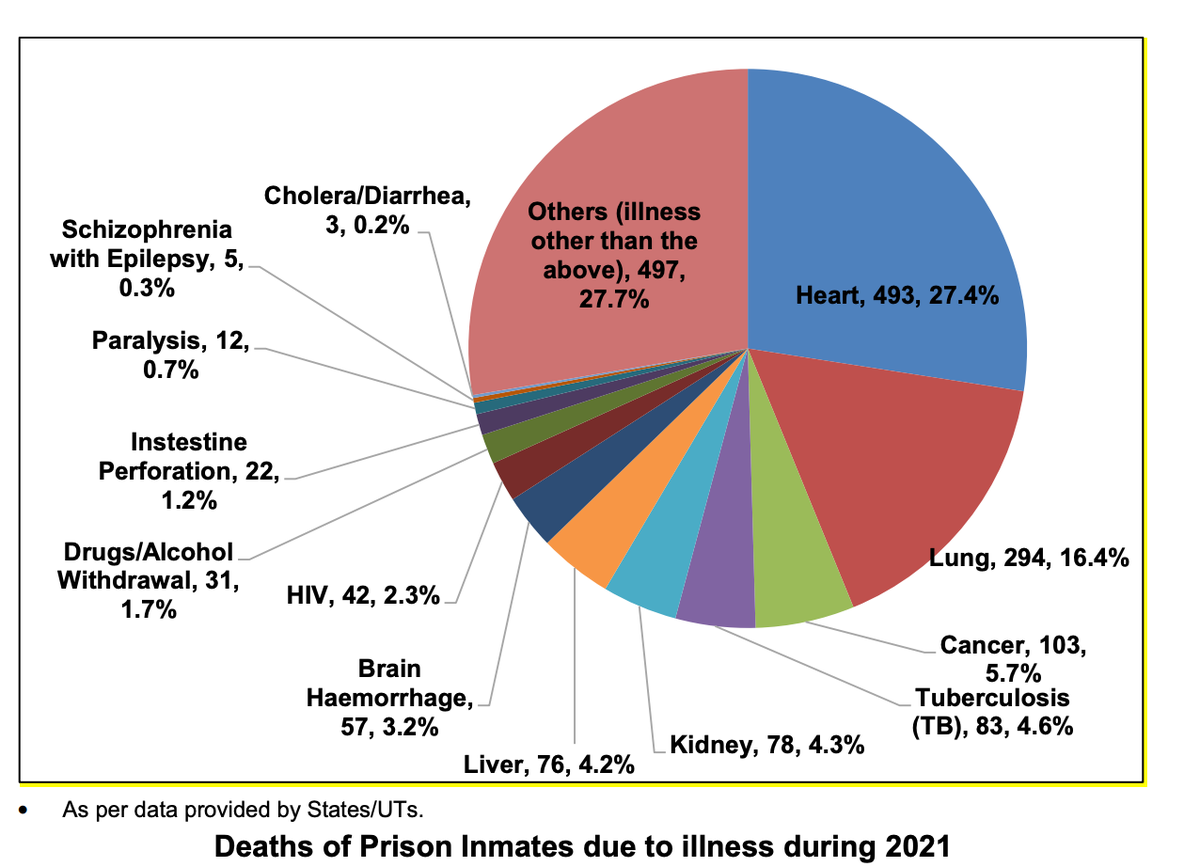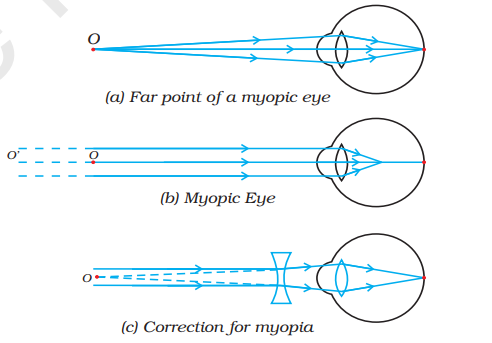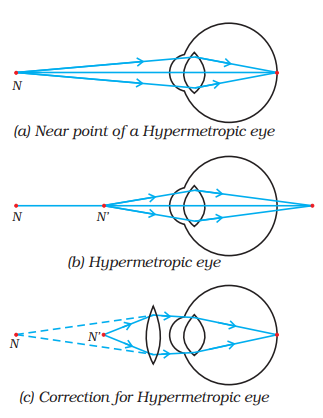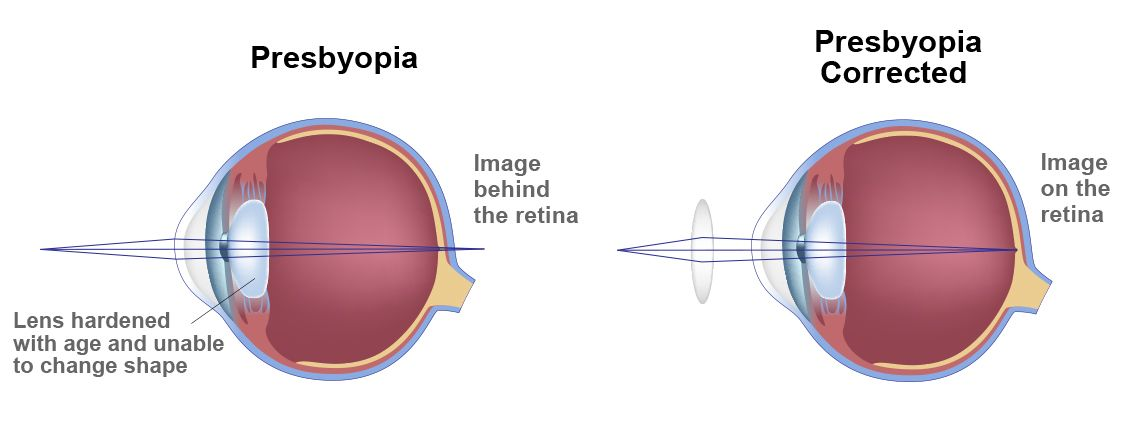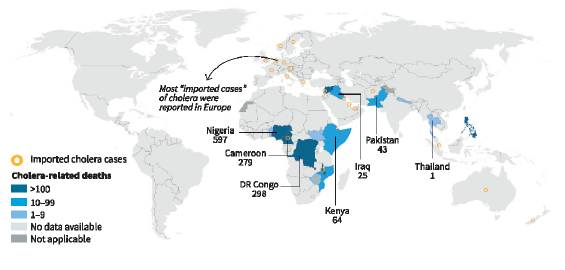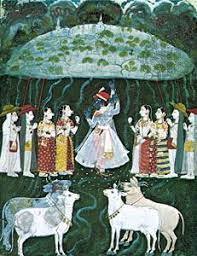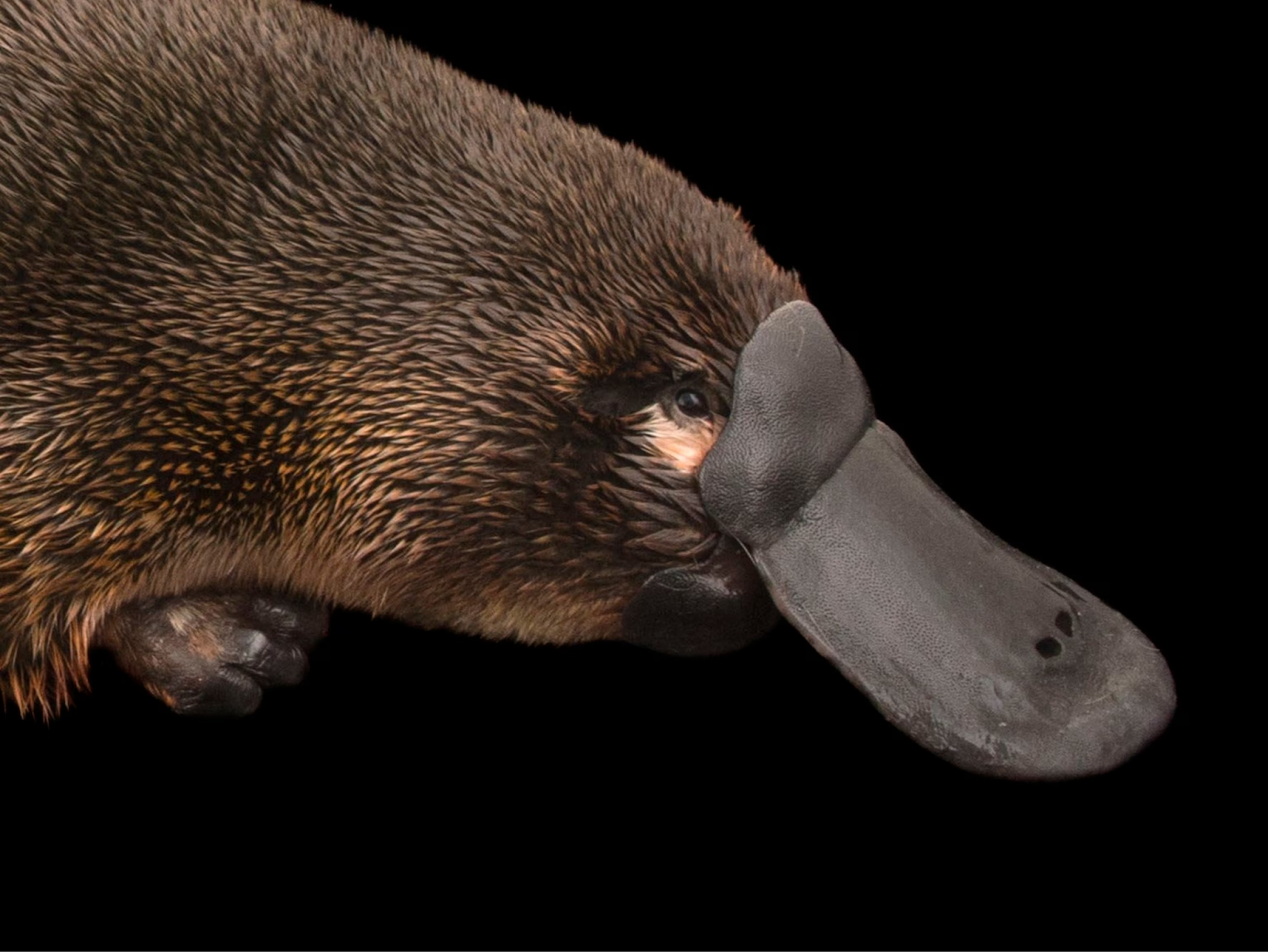Governance
Deaths in India’s Prisons
For Prelims: Deaths in India’s Prisons, Supreme Court Committee on Prison Reforms, National Crime Records Bureau (NCRB), Model Prison Manual of 2016 and the Mental Healthcare Act of 2017.
For Mains: Deaths in India’s Prisons.
Why in News?
Recently, the Supreme Court Committee on Prison Reforms has found suicide to be one of the leading causes of Unnatural Deaths among Indian prisoners.
How are Prison Deaths Classified?
- Prison Deaths are labeled as Natural or Unnatural by the Prison Statistics India report published by the National Crime Records Bureau (NCRB) every year.
- In 2021, a total of 2,116 prisoners died in judicial custody, with almost 90% of cases recorded as natural deaths.
- Natural Deaths account for aging and illness. Illness has been further sub-categorized into diseases such as heart conditions, HIV, tuberculosis, and cancer, among others.
- As the prison population swells, recorded natural deaths have increased from 1,424 in 2016 to 1,879 in 2021.
- Unnatural Deaths are more diverse in classification, profiled as,
- Suicide (due to hanging, poisoning, self-Iinflicted injury, drug overdose, electrocution, etc.)
- Death due to inmates
- Death due to assault by outside elements
- Death due to firing
- Death due to negligence or excesses
- Accidental deaths (natural calamities like earthquakes, snakebites, drowning, accidental fall, burn injury, drug/alcohol consumption, etc.
- The suicide rate among inmates was found to be more than twice in comparison to what is recorded in the general population.
How are Deaths Investigated?
- Since 1993, the NCRB has been required to intimate a custodial death within 24 hours, followed by post-mortem reports, magisterial inquest reports or videography reports of the post-mortem.
- In cases of custodial rape and death, the Code of Criminal Procedure also requires compulsory judicial magisterial inquiry in place of an executive magistrate inquiry.
What are the Efforts to Tackle Prison Death?
- Judgment of Supreme Court:
- The Supreme Court in a 1996 judgment articulated the social obligation towards prisoners’ health, noting that they suffer from a “double handicap”:
- ”First, the prisoners do not enjoy the access to medical expertise that free citizens have. Their incarceration places limitations on such access; no physician of choice, no second opinions, and few if any specialists.
- Secondly, because of the conditions of their incarceration, inmates are exposed to more health hazards than free citizens.”
- The Supreme Court in a 1996 judgment articulated the social obligation towards prisoners’ health, noting that they suffer from a “double handicap”:
- Government Efforts:
- The Model Prison Manual of 2016 and the Mental Healthcare Act of 2017, outline inmates’ right to healthcare.
- This includes adequate investment in healthcare facilities, setting up mental health units, training officers to provide basic and emergency care, and formulating suicide prevention programmes to thwart such instances.
- In light of rising suicide cases, the NHRC in June 2023 issued an advisory to States, highlighting that suicides arise out of both medical and mental health issues.
- The NHRC recommended filling positions of “Prison Welfare Officers, Probation Officers, Psychologists, and Medical Staff”.
- The Model Prison Manual of 2016 and the Mental Healthcare Act of 2017, outline inmates’ right to healthcare.
What are the NHRC’s Recommendations Related to Prison Deaths?
- Preventing Suicide Attempts:
- Regular checks and vigilance on bed sheets and blankets of inmates are advised to ensure that these items are not used in attempts to commit suicide.
- Mental Health Training for Staff:
- A component of mental health literacy should be included in the basic training of prison staff. Periodic refresher courses are also recommended to keep staff informed and updated on mental health-related matters.
- Regular Observation and Support:
- Regular observation of inmates by prison staff is essential, and assigning a prisoner 'buddy' who is trained in psychological first aid can provide critical support to those in need.
- Gatekeeper Model Implementation:
- The Gatekeeper Model, devised by the World Health Organization (WHO), should be adopted to strengthen mental health care in prisons.
- This involves training carefully selected inmates to identify fellow prisoners who may be at risk of suicide, thereby facilitating early intervention and support.
- Addressing Addiction Issues:
- Measures to tackle addiction among prisoners should be implemented, including regular visits by mental health care professionals and de-addiction experts to provide necessary support and interventions.
- Life-Skill Education and Activities:
- Inmates should be provided with life-skill-based education and engaging activities such as Yoga, Sports, crafts, drama, music, dance, and suitable spiritual and optional religious instructions.
- These activities help channelize inmates' energies positively and occupy their time constructively. Collaboration with reputable NGOs can be sought to facilitate this.
- Inmates should be provided with life-skill-based education and engaging activities such as Yoga, Sports, crafts, drama, music, dance, and suitable spiritual and optional religious instructions.
Important Facts from Prison Statistics
- Number of Prisons:
- The total number of prisons at national level has increased from 1,306 in 2020 to 1,319 in 2021, having increased by 1.0%.
- The highest number of jails was reported in Rajasthan (144) followed by Tamil Nadu (142), Madhya Pradesh (131).
- The total number of prisons at national level has increased from 1,306 in 2020 to 1,319 in 2021, having increased by 1.0%.
- Capacity:
- The actual capacity of prisons has increased from 4,14,033 in 2020 to 4,25,609 in 2021, having increased by 2.8%.
- Out of the total capacity 4,25,609 in 1,319 prisons in 2021, the Central Jails of the country were having the highest capacity (1,93,536) followed by the District Jails and the Sub Jails.
- Convicted Prisoners:
- The number of convicted prisoners has increased from 1,12,589 in 2020 to 1,22,852 in 2021, having increased by 9.1% during the period.
- The highest number of convicted prisoners were lodged in Central Jails followed by District Jails and Sub Jails by December, 2021.
- Undertrial Prisoners.
- The number of undertrial prisoners has increased from 3,71,848 in 2020 to 4,27,165 in 2021 having increased by 14.9% during this period.
- Among the 4,27,165 undertrial prisoners, the highest number of undertrial prisoners was lodged in District Jails followed by Central Jails and Sub Jails as on 31st December, 2021.
- Detenues:
- The number of detenues has decreased from 3,590 in 2020 to 3,470 in 2021 (as on 31st December of each year), having decreased by 3.3% during this period. b. Among the 3,470 detenues, the highest number of detenues were lodged in Central Jails followed by District Jails and Special Jails as on 31st December, 2021.
Way Forward
- Regularly review and update policies to align with evolving needs and challenges.
- There is a need for Investing in training and capacity building for prison staff to ensure better care and support for inmates.
- Fostering collaboration between government bodies, NGOs, and healthcare professionals to enhance mental health care and addiction management within prisons.
- Promote awareness and advocacy campaigns to reduce stigma around mental health and addiction, fostering a more empathetic environment within the prison system.
- Encourage research to identify emerging trends and effective interventions, supported by ongoing monitoring and evaluation of implemented measures.


Governance
Draft Patent Amendment Rules Undermine Pre-grant Opposition
For Prelims: Patent, Evergreening of Patents, Pre-grant Opposition
For Mains: Impact of Patent rules on the Production and Availability of Affordable Generic Drugs, Intellectual Property Rights (IPRs) .
Why in News?
Recent draft patent amendment rules in India proposed by the Department for Promotion of Industry and Internal Trade (DPIIT) have raised concerns over their potential impact on affordable drugs and vaccines. These rules may hinder pre-grant opposition, a vital safeguard against unwarranted patent extensions, posing challenges to public health.
What are the Draft Patent Amendment Rules?
- Draft Patent Amendment Rules
- About:
- The draft patent amendment rules are a set of proposed modifications to the existing patent rules in India, which regulate the procedures and fees for filing, examining, granting, and opposing patents.
- Main Features:
- The introduction of variable fees for filing pre-grant oppositions, which could range from Rs. 1,500 to often exceeding Rs. 40,000, depending on the category and number of applicants, has been implemented.
- The provision of granting the controller of patents the power to determine the maintainability of representation by individuals or civil society organizations seeking to file pre-grant oppositions.
- The increase of the official fee for filing post-grant oppositions, which will be equal to the aggregate patent filing cost incurred by the applicant.
- About:
- Concerns:
- Restricting Access to Affordable Drugs:
- The proposed rules may limit access to affordable generic drugs, by making it harder to challenge patents.
- The introduction of variable fees for filing pre-grant oppositions could impose a significant financial burden on civil society organizations and patient groups.
- Controller's Discretion:
- Under the current Patents Act, 1970 any person can file a pre-grant opposition, providing a democratic approach to challenging patents.
- However, the draft rules propose to give the controller the authority to decide the maintainability of those filing pre-grant oppositions. This shift in power has raised concerns about potential biases and challenges for those seeking to oppose patents.
- Under the current Patents Act, 1970 any person can file a pre-grant opposition, providing a democratic approach to challenging patents.
- Impact on Public Health Safeguards:
- Pre-grant opposition serves as a crucial public health safeguard against practices like patent evergreening and the granting of unwarranted monopolies.
- Evergreening of patents is a strategy to extend the term of a patent by obtaining new patents before the original one expires. In India, Section 3(d) of the Patent Act 1970 (amended in 2005) prohibits granting patents for new forms of known substances unless they significantly differ in efficacy. Therefore, evergreening is not allowed under Indian patent law.
- It ensures continued accessibility to quality-assured and affordable generic medicines.
- Weakening pre-grant opposition could lead to unwarranted patent extensions, limiting access to essential medicines and vaccines.
- Pre-grant opposition serves as a crucial public health safeguard against practices like patent evergreening and the granting of unwarranted monopolies.
- Pharma Lobbying:
- Concerns have been raised that the rules favour pharmaceutical companies and may undermine India's unique provision of the pre-grant opposition.
- Global Impact:
- The proposed changes could disproportionately impact patients in India and the global South, who rely heavily on India's production of affordable generic drugs and vaccines.
- A threat to access to essential medicines may put patients at risk and affect the generic drug industry.
- The proposed changes could disproportionately impact patients in India and the global South, who rely heavily on India's production of affordable generic drugs and vaccines.
- Restricting Access to Affordable Drugs:
Notable Instances of Successful Pre-grant Oppositions
- Pre-grant oppositions by patient groups and civil society organizations have frequently led to the rejection of patent extensions sought by big pharmaceutical companies based on weak claims of "novel invention."
- Tenofovir Disoproxil Fumarate (TDF):
- In 2006, patient groups contested Sahara's TDF patent due to the drug's use of a known compound.
- Nevirapine:
- Boehringer Ingelheim's pediatric Nevirapine patent was denied in 2008 following a pre-grant opposition, as it failed to show a significant improvement in efficacy.
- Glivec:
- Novartis' cancer drug Glivec faced rejection by the Supreme Court of India in 2013, as it was considered a modified version of an existing drug, Imatinib.
- Tenofovir Disoproxil Fumarate (TDF):
- Patent:
- About:
- A Patent is a statutory right for an invention granted for a limited period of time to the patentee by the Government, in exchange of full disclosure of invention for excluding others, from making, using, selling, importing the patented product or process for producing that product for those purposes without his consent.
- Patent protection is a territorial right and therefore it is effective only within the territory of India. There is no concept of global patent.
- Patentability Criteria for an Invention:
- It should be novel.
- Must involve an inventive step (technical advancement)
- Capable of industrial application.
- About:
- Opposition Against Grant of a Patent :
- The Indian Patent Act, 1970 allows the public to file objections against patents at two stages:Pre-grant opposition and Post-grant opposition.
- Pre-grant opposition:
- Filing an Opposition:
- Any person can file a pre-grant opposition in writing after the patent application's publication but before it's grant. Complete specifications are needed, not just the abstract.
- Grounds for Opposition:
- Wrongful Obtainment(Invention was wrongfully obtained), Prior Publication, Prior Claim, Prior Knowledge or Use, Obviousness, Non-Patentable Subject Matter, Insufficient Description, Non-Disclosure (Failure to disclose required details), False Disclosure, Time Limit(Conventional application not filed within 12 months from the first patent application), Biological Material( Failure to disclose the origin or source), Traditional Knowledge( The invention was anticipated using indigenous community knowledge).
- Filing an Opposition:
- Post-grant opposition:
- Once the patent has been granted, a written opposition can be filed after publication, and it must be submitted to the Controller within 12 months of the patent's publication in the Indian Patent Journal.
- Grounds for opposition are the same as in pre-grant opposition.
UPSC Civil Services Examination, Previous Year Question (PYQ):
Mains:
Q. Bringing out the circumstances in 2005 which forced an amendment to the section 3(d) in Indian Patent Law, 1970, discuss how it has been utilized by the Supreme Court in its judgement in rejecting Novartis’ patent application for ‘Glivec’. Discuss briefly the pros and cons of the decision. (2013)


Science & Technology
World Health Organization's Specs 2030
For Prelims: Specs 2030, Refractive Error of Vision, World Health Organization (WHO)
For Mains: Impact of vision impairment, Challenges India faces in providing vision
Why in News?
Millions around the world suffer from vision problems, with a significant portion in need of spectacles. However, access to eye care remains a challenge, particularly in low- and middle-income countries.
- In response to this crisis, the 74th World Health Assembly, 2021 has embarked on an initiative called "Specs 2030" to provide integrated and people-centered eye care.
What is Specs 2030?
- About:
- The World Health Organization (WHO) is set to launch the SPECS 2030. The initiative's goal is to assist member states in addressing the unmet need for spectacles while ensuring the delivery of quality eye care.
- Vision:
- It envisions a world in which everyone who needs a refractive error intervention has access to quality, affordable and people-centred refractive error services.
- Mission:
- It has the mission to support Member States with the achievement of the 74th World Health Assembly endorsed 2030 target on effective refractive error coverage.
- The initiative calls for coordinated global action amongst all stakeholders across 5 strategic pillars, in line with the letters of SPECS, to address the key challenges to improving refractive error coverage.
What is a Refractive Error of Vision?
- About:
- Refractive error of vision is a common eye condition that affects the way light is focused on the retina( (a light-sensitive layer of tissue in the back of your eye), leading to blurred or distorted vision.
- This condition can manifest in various forms and severity levels.
- Types of Refractive Errors:
- Symptoms of Refractive Errors:
- The most common symptom is blurry vision. Other symptoms include Double vision, Hazy vision, Seeing a glare or halo around bright lights, Headaches, and Eye strain.
Other Types of Common Eye Defects/ Diseases
- Color Blindness (Color Vision Deficiency):
- The most common type of color vision deficiency makes it hard to tell the difference between red and green. Another type makes blue and yellow look the same.
- Cataract:
- A cataract is a clouding of the lens of the eye, which is typically clear. It occurs when the structure of crystallin proteins that make up the lens in human eyes deteriorates.
- Age-Related Macular Degeneration (AMD):
- It is an eye disease that can blur central vision. It happens when aging causes damage to the macula — the part of the eye that controls sharp, straight-ahead vision. The macula is part of the retina (the light-sensitive tissue at the back of the eye).
- Conjunctivitis (Pink Eye):
- It is an eye condition characterized by inflammation of the conjunctiva, the thin membrane that covers the white part of the eye and lines the inner eyelids.
- Glaucoma:
- It is a group of eye diseases that can cause vision loss and blindness by damaging a nerve in the back of your eye called the optic nerve.
What is the Impact of Vision Impairment?
- The Global Vision Crisis:
- According to WHO, over 2.2 billion people globally suffer from compromised eyesight.
- At least 1 billion of these cases could have been prevented with access to proper eye care.
- A staggering 90% of individuals with vision impairment or blindness reside in low- and middle-income countries.
- India's Urgent Need for Vision Care:
- India is facing a huge challenge of providing eye care and glasses to millions of people who suffer from vision impairment due to uncorrected refractive errors.
- According to the WHO, at least 100 million Indians need spectacles but have no access to them.
- India is facing a huge challenge of providing eye care and glasses to millions of people who suffer from vision impairment due to uncorrected refractive errors.
- The Economic Impact of Vision Impairment:
- Vision impairment results in a significant global economic loss of approximately USD 410.7 billion.
- The cost of ensuring access to eye care and treatment for all is estimated at USD 24.8 billion, according to the WHO.
- The Alarming Rise of Myopia:
- Myopia is increasing globally. In China, the average onset of myopia has shifted from 10.5 years to 7.5 years in just two decades.
- East and South Asian countries, including Taiwan, Korea, China, Singapore, and Japan, are witnessing a significant surge in myopia cases.
- By 2050, it is projected that 50% of the world's population will be myopic. It is predicted that half of the world's population will require glasses in the near future.
Way Forward
- Implementing strategies to reduce screen time, encouraging outdoor activities, and monitoring children's eye health can help combat myopia.
- Encouraging individuals of all ages to undergo regular eye check-ups is essential for early detection and intervention.
- Building infrastructure for accessible eye care services, especially in remote and underserved areas, is critical.
- Public education campaigns should be launched to increase awareness about refractive errors and their impact on vision.
- Encouraging governments, NGOs, and the private sector to collaborate and invest in the Specs 2030 is essential to achieve its goals.
UPSC Civil Services Examination Previous Year Question (PYQ)
Mains
Q. Appropriate local community-level healthcare intervention is a prerequisite to achieve ‘Health for All’ in India. Explain. (2018)


Social Justice
Cholera
For Prelims: Cholera, World Health Organization (WHO), Vibrio cholerae, Oral Cholera Vaccines (OCV), Acute Diarrheal Illness.
For Mains: Cholera, its causes and related Initiatives, Issues Relating to Development and Management of Social Sector/Services relating to Health.
Why in News?
According to the World Health Organization (WHO)’s weekly Epidemiological Record, the World reported more than twice as many cholera cases in 2022 as it did in 2021.
- This escalation presents a substantial challenge to the WHO ambitious goal set in 2017 to reduce global cholera deaths by 90% by 2030.
What is Cholera?
- About:
- Cholera, a water-borne disease primarily caused by the bacteria Vibrio cholerae strains O1 and O139, poses a significant public health challenge worldwide.
- Strain O1 is the predominant cause of outbreaks, with O139 occurrences being rare and mostly confined to Asia.
- It is an acute diarrheal illness caused by infection of the intestine.
- The infection is often mild or without symptoms, but sometimes can be severe.
- Cholera, a water-borne disease primarily caused by the bacteria Vibrio cholerae strains O1 and O139, poses a significant public health challenge worldwide.
- Symptoms:
- Profuse watery diarrhoea, Vomiting, Leg cramps
- Transmission:
- A person may get cholera by drinking water or eating food contaminated with the cholera bacterium.
- The disease can spread rapidly in areas with inadequate treatment of sewage and drinking water.
- Vaccine:
- Currently there are three WHO pre-qualified Oral Cholera Vaccines (OCV), Dukoral, Shanchol, and Euvichol-Plus. All three vaccines require two doses for full protection.
What are Factors Driving the Escalation of Cholera Cases?
- Decline in Covid Pandemic Restrictions:
- The decline in Covid-19 pandemic restrictions played a crucial role in allowing the spread of cholera. Limited investments in providing adequate care to vulnerable populations, effects of climate change, and escalating conflicts further exacerbated the situation.
- Insufficient Access to Sanitation:
- The symbiotic relationship between cholera transmission and insufficient access to clean water and sanitation facilities is a critical factor.
- Notably, Vibrio cholerae bacteria tend to thrive in warmer waters with lower salinity, conditions intensified by climate change-induced floods, heatwaves, intense monsoonal rains, storms, and prolonged warm periods.
- Vibrio Pathogens and Microplastics:
- According to research from the University of Florida in June 2023, Vibrio pathogens possess a unique capability to adhere to microplastics, potentially adapting to this environment, even in the open ocean.
- This interaction between Vibrio bacteria and microplastics signifies an additional dimension to cholera transmission dynamics, necessitating further investigation and policy considerations.
- Climate Change and Cholera Transmission:
- A study published in 2021 in The Lancet Planetary Health emphasizes how climate change intensifies cholera concerns.
- It predicted a potential increase of 38,000 km in coastline conducive to Vibrio bacteria development by 2100, compared to the 1850-2014 average.
What are the Geographical Distribution and Cholera Trends?
- The majority of cholera cases persistently emanate from Africa and Asia, with Europe sporadically reporting "imported cases."
- In Africa, the 2022 cholera cases were more dispersed compared to 2021, with no single country reporting more than 25% of all cases and 30% of all deaths.
- However, this apparent improvement is overshadowed by the doubling of case and death numbers in countries apart from Nigeria, which experienced a massive cholera outbreak in 2021.
- A similar pattern of increased cases was observed in Asia, notably in countries like Lebanon, Syria, and Afghanistan.
What are the Initiatives to Curb Cholera?
- A global strategy on cholera control, Ending Cholera: A global roadmap to 2030, with a target to reduce cholera deaths by 90% was launched in 2017.
- Global Task Force for Cholera Control (GTFCC): WHO revitalized the Global Task Force for Cholera Control (GTFCC) to strengthen WHO’s work in eradicating cholera.
- The purpose of the GTFCC is to support increased implementation of evidence-based strategies to control cholera.
What can be the Response Measures to Tackle Cholera?
- To address the growing cholera burden globally, adaptations in the recommended oral cholera vaccine regimen have been made.
- While awaiting the fruition of larger-scale manufacturing investments, the management of the emergency stockpile for the oral cholera vaccine has modified the vaccination regime, reducing it from two doses to a single dose.
- This strategic adjustment aims to enhance the efficiency and reach of cholera vaccinations.


Indian Heritage & Culture
Allah Baksh and Mewari Style Painting
For Prelims: Allah Baksh and Mewari Style Painting, Maharaja Jai Singh, Mahabharata, Indian Miniature Painting
For Mains: Indian Miniature Painting, Indian Painting
Why in News?
Allah Baksh, a Mewari miniature painter late 17th century, portrayed the Interpretation of Mahabharata in his Painting and is known for his intricate and delightful representation.
Who was Allah Baksh?
- About:
- Allah Baksh was a court painter employed by Maharaja Jai Singh of Udaipur during the late 17th century.
- Paintings and Portrayal:
- Each painting by Allah Baksh meticulously portrays the details of characters' costumes, the flora and fauna in the background, and the depiction of magical and mystical events.
- These miniatures encapsulate a delightful representation of the Mahabharata, showcasing a dialogue between the verbal and visual imaginations of the poet and the painter.
What is Mewari Style Miniature Painting?
- About:
- Mewār painting, one of the most important schools of Indian miniature painting of the 17th and 18th Centuries. It is a school in the Rājasthanī style and was developed in the Hindu principality of Mewār (in Rājasthān state).
- It is a highly refined and intricate form of painting characterized by its attention to detail, vibrant colors, and meticulous craftsmanship.
- The works of the school are characterized by simple bright color and direct emotional appeal.
- The comparatively large number of paintings to which dates and places of origin can be ascribed make possible a more comprehensive picture of the development of painting in Mewār than in any other Rājasthanī school.
- Famous Painter: Sahibdin (painted the Ragamala in 1628).
What is Miniature Painting?
- About:
- Miniature paintings are colorful handmade paintings very small in size. One of the outstanding features of these paintings is the intricate brushwork which contributes to their unique identity.
- The colors used in the paintings are derived from various natural sources like vegetables, indigo, precious stones, gold and silver.
- They were often painted for either books or albums, on perishable material including paper, palm leaves and cloth.
- The Palas of Bengal are considered the pioneers of miniature painting in India.
- The tradition of miniature paintings was further taken forward by the artists of various Rajasthani schools of painting, including the Kishangarh, Bundi Jaipur, Mewar and Marwar.
- Schools of Miniature Painting:
- Pala School: The earliest Indian miniature paintings are related to the Pala School dating back to the 8th century A.D.
- This school of painting emphasized on the symbolic use of colors and the themes were often taken from the Buddhist tantric rituals.
- Jain School: The Jain School of painting gained prominence in the 11th century A.D when religious texts like ‘Kalpa Sutra’ and ‘Kalkacharya Katha’ were portrayed in the form of miniature paintings.
- Mughal School: The amalgamation of Indian paintings and Persian miniature paintings gave rise to the Mughal School of miniature painting.
- Interestingly, Persian miniature paintings were largely influenced by Chinese paintings.
- Rajasthani School: The decline of the Mughal miniature paintings resulted in the rise of the Rajasthani School. Rajasthani School of painting can be further divided into various schools depending on the region they were created in.
- The Mewar School, Marwar School, Hadoti School, Dhundar School, Kangra and Kullu Schools of art are all part of Rajasthani School of painting.
- Pahari School: Pahari School of miniature painting emerged in the 17th century A.D. These paintings originated in the kingdoms of North India, in the Himalayan region.
- Deccan School: The Deccan School of miniature painting flourished in places like Ahmednagar, Golconda, Tanjore, Hyderabad and Bijapur from 16th to 19th century A.D.
- The Deccan School of miniature painting was largely influenced by the rich traditions of the Deccan and the religious beliefs of Turkey, Persia and Iran.
- Pala School: The earliest Indian miniature paintings are related to the Pala School dating back to the 8th century A.D.
UPSC Civil Services Examination, Previous Year Question (PYQ)
Q. The well-known painting “Bani Thani” belongs to the (2018)
(a) Bundi school
(b) Jaipur school
(c) Kangra school
(d) Kishangarh school
Ans: (d)
Exp:
- Kishangarh School
- Bani Thani painting belongs to the Kishangarh School. Kishangarh School (18th century) of Indian painting emerged in the Princely State of Kishangarh (Central Rajasthan).
- The school is clearly distinguished by its individualistic facial type and its religious intensity. The sensitive, refined features of the men and women are drawn with pointed noses and chins, deeply curved eyes, and serpentine locks of hair.
- The brilliant series of paintings on the Radha– Krishna theme were due largely to the inspiration of Raja Savant Singh (reigned 1748–57). He was a poet also, who wrote under the name of Nagari Das.
- The master artist largely responsible for transmitting the romantic and religious passions of his patron (i.e., Raja Savant Singh) into new and fresh visual images was Nihal Chand.
- Kangra School
- Around mid-18th century, as forces of Nadir Shah (1739) and Ahmad Shah Abdali (1744-1773) pillaged the Mughal capital of Delhi and surrounding areas, the birth of the Kangra School of painting at Haripur-Guler under the patronage of Raja Govardhan Chand (1744-1773) took place as he provided asylum to refugee artists trained in the Mughal style of painting.
- Kangra painting is named after Kangra (Himachal Pradesh), a former Princely State.
- These artists who were traditionally trained in theMughal style (which predominately featured flattering portraits of their patrons and hunting scenes), now incorporated themes from the love poetry of Jayadeva, Bihari and Keshav Das who wrote ecstatically of the love of Radha and Krishna.
- Bundi School
- Between 17th-19th century, Bundi School of painting developed in the Princely State of Bundi and its neighbouring principality of Kotah (now Kota) both in present-day Rajasthan.
- Its characteristic features are dramatic night skies, distinct of depicting water by light swirls against a dark background with special focus on highlighting lush vegetation.
- The painting style reached its peak during the first half of the 18th century, but continued to flourish into the 19th century and had found exceptional patron like Maharao Ram Singh II (1828–66) under whom the art witnessed its brilliant phase.
- One of the earliest examples of the Bundi paintings is the Chunar Ragamala painted in 1561.
- Bundi paintings emphasized on hunting, courtscenes, festivals, processions, life of nobles, lovers,animals, birds and scenes from Lord Krishna’s life.
- Jaipur School
- As the rulers of Jaipur (Amer) Princely State had close affiliation with the Mughals, the art which developed between the late 16th and early 18th century had syncretic elements of both Rajasthani style (which predominated the art style between 16th-17th century) and Mughal style.
- With patronage of rulers like Savai Jai Singh and Pratap Singh, splendid portraits (aristocratic in nature) and large paintings centred around Lord Krishna became a signature of Rajasthani style.


Important Facts For Prelims
Copyright Infringement and Passing Off
Why in News?
The Delhi High Court recently garnered attention by summoning Instagram account People of India (POI) in a copyright infringement suit filed by Humans of Bombay (HOB).
- This dispute stems from significant similarities in their storytelling methods, with HOB asserting that POI copied their content.
- This case emphasizes substantial legal concepts including copyright infringement, injunctions, and passing off.
What are the Key Terms Related to this Issue?
- Copyright:
- Copyright refers to the legal protection provided to creators of literary, dramatic, musical, and artistic works, as well as producers of cinematograph films and sound recordings.
- The Copyright Act of 1957 aims to safeguard these creative works as the intellectual property of their creators.
- Unlike the case with patents, copyright protects the expressions and not the ideas.
- In addition to the act, the Copyright (Amendment) Rules 2021, are brought into effect to bring the copyrights in line with other relevant laws.
- Copyright owners have the right to take legal action against infringers, including seeking remedies such as injunctions, damages, and accounts.
- Copyright refers to the legal protection provided to creators of literary, dramatic, musical, and artistic works, as well as producers of cinematograph films and sound recordings.
- Injunction: In the recent case of HOB vs. POI, HOB sought an injunction to prevent the infringement of their copyrighted content.
- An injunction is a court order that typically directs someone to stop a particular action.
- However, obtaining an injunction is not a guarantee that all instances of misuse will be rectified immediately, as enforcing it can be challenging.
- Copyright infringement: It occurs when a copyrighted work is used without authorization, particularly if a substantial part of the work is reproduced.
- In HOB's case, the court observed "substantial imitation" between HOB and POI, but the degree of what is considered "substantial" can vary.
- It often hinges on the quality rather than the quantity of the copied content. Even copying a catchy phrase from another work can constitute infringement.
- In HOB's case, the court observed "substantial imitation" between HOB and POI, but the degree of what is considered "substantial" can vary.
- Passing Off: In the Cadila Healthcare Limited vs. Cadila Pharmaceuticals Limited case, 2001 the Supreme Court ruled that passing off is a form of unfair trade competition through which one party attempts to benefit from the reputation established by another in a particular trade or business.
- Passing off involves the misrepresentation or deception of consumers regarding the nature, character, or performance of goods or services associated with rival traders.
- To establish a claim of passing off, there must be some form of deception or harm to the goodwill and reputation of the original owner.
Legal Insights
UPSC Civil Services Examination, Previous Year Question (PYQ)
Q. Consider the following statements: (2019)
- According to the Indian Patents Act, a biological process to create a seed can be patented in India.
- In India, there is no Intellectual Property Appellate Board.
- Plant varieties are not eligible to be patented in India.
Which of the statements given above is/are correct?
(a) 1 and 3 only
(b) 2 and 3 only
(c) 3 only
(d) 1, 2 and 3
Ans: (c)
- Section 3(J) of Indian Patent Act, excludes from patentability “plants and animals in whole or in any part thereof other than microorganisms, including seeds, varieties, and species, and essentially biological processes for production or propagation of plants and animals”. Hence, statement 1 is not correct.
- The Intellectual Property Appellate Board (IPAB) was constituted in 2003 by the Government of India to hear and resolve the appeals against the decisions of the registrar under the Indian Trademarks Act, 1999 and the Geographical Indications of Goods (Registration and Protection) Act, 1999. Hence, statement 2 is not correct.
- Plant variety protection provides legal protection of a plant variety to a breeder in the form of Plant Breeder’s Rights (PBRs). In India, the Protection of Plant Varieties and Farmers’ Rights (PPVFR) Act, 2001, is a sui generis system that aims to provide for the establishment of an effective system for the protection of plant varieties and the rights of plant breeders and farmers. A sui generis system is an alternative to the patent system. Hence, statement 3 is correct. Therefore, option (c) is the correct answer.


Important Facts For Prelims
Nobel Prize in Literature 2023
Why in News?
Recently, the Nobel Prize in Literature for 2023 was awarded to Jon Fosse "for his innovative plays and prose which give voice to the unsayable."
Note
- The Nobel Prize in Literature 1913 was awarded to Rabindranath Tagore "because of his profoundly sensitive, fresh and beautiful verse, by which, with consummate skill, he has made his poetic thought, expressed in his own English words, a part of the literature of the West".
Who is Jon Fosse?
- Jon Fosse, a Norwegian author and dramatist, writes in Norwegian Nynorsk, the less common of the two official versions of Norwegian language.
- Jon Fosse is celebrated for his writing style, often referred to as "Fosse minimalism."
- His style is characterized by simple, minimal, and searing dialogue, drawing comparisons to literary giants like Samuel Beckett and Harold Pinter, both of whom have previously been awarded the Nobel Prize in Literature.
- His themes explore the absurdity, the futility and yet the power of the human condition; everyday confusions and irresolutions; and the difficulty of forming actual connections.
- Notable works by Fosse include "A New Name: Septology VI-VII," "I Am the Wind," "Melancholy," "Boathouse," and "The Dead Dogs."
Who are the Other Recent Nobel Laureates in the Field of Literature?
- 2022:
- Annie Ernaux “for the courage and clinical acuity with which she uncovers the roots, estrangements and collective restraints of personal memory”.
- 2021:
- Abdulrazak Gqurnah “for his uncompromising and compassionate penetration of the effects of colonialism and the fate of the refugee in the gulf between cultures and continents”.
- 2020:
- Louise Glück “for her unmistakable poetic voice that with austere beauty makes individual existence universal”.
Reference to Other Announcements of the Nobel Prizes 2023: Nobel Prize in Chemistry, Physics, Physiology or Medicine.
Important Facts For Prelims
Platypus
Why in News?
- Recent research sheds light on a troubling situation related to water-dwelling animal, Platypuses (Ornithorhynchus anatinus), following the 2019–20 Black Summer bushfires in eastern Australia.
- Despite their aquatic habitat, platypus populations are dwindling in the post-fire environment. This study delves into the implications for the conservation of these unique creatures. Environmental DNA (eDNA) was used to detect platypus presence in the study.
What are the Major Points Related to Platypus?
- About:
- Platypuses are unique to Australia. Its streamline body and a broad, flat tail are covered with dense waterproof fur, which provides excellent thermal insulation.
- They possess webbed feet for swimming and electroreceptors in their bills to find food in rivers and streams.
- Along with echidnas, Platypuses are grouped in a separate order of mammals known as monotremes, which are distinguished from all other mammals because they lay eggs.
- Also, males have a venomous spur on their ankles, a unique feature among mammals, that they primarily used during the breeding season.
- While not lethal, the venom can cause severe pain and swelling in humans.
- Platypuses are unique to Australia. Its streamline body and a broad, flat tail are covered with dense waterproof fur, which provides excellent thermal insulation.
- Habitat and Distribution:
- Platypuses inhabit freshwater systems across a wide range of Australian landscapes.
- They can be found in tropical rainforest lowlands, plateaus of northern Queensland, and even cold, high-altitude regions like Tasmania and the Australian Alps.
- Seasonality and Behavior:
- Platypuses are active year-round, with a preference for twilight and nighttime activity.
- Platypuses spend much of their time in burrows along riverbanks or in rocky crevices and stream debris.
- Feeding Habits:
- Platypuses primarily feed at night on a wide variety of aquatic invertebrates.
- They feed on insect larvae, shrimps, swimming beetles, water bugs, tadpoles, worms, and more.
- Larger prey is taken individually and consumed after floating on the water surface.
- Predators and Threats:
- Predators include crocodiles, goannas, carpet pythons, eagles, and large native fish.
- Land-based predators like foxes, dogs, and dingoes may pose a threat.
- Ectoparasites, tick species, and fungal infections can also affect platypuses.
- Conservation Status:
- IUCN Red List: Near Threatened.
What is Environmental DNA?
- DNA, short for deoxyribonucleic acid, is the hereditary material in organisms that contains the biological instructions for building and maintaining them.
- Environmental DNA (eDNA) is nuclear or mitochondrial DNA that is released from an organism into the environment.
- Sources of eDNA include secreted feces, mucous, and gametes, shed skin and hair.
- In aquatic environments, eDNA is diluted and distributed by currents and other hydrological processes, but it only lasts about 7–21 days, depending on environmental conditions.


Rapid Fire
Rapid Fire Current Affairs
Government Exempts Aviation from IBC's Moratorium
Recently, the Ministry of Corporate Affairs (MCA) exempted all transactions and agreements related to aircraft and their engines from the moratorium (temporary suspension of an activity) under Section 14 of the Insolvency and Bankruptcy Code (IBC), 2016 providing relief to aircraft lessors (a company that leases out its fleet of aircraft to airlines).
- Aircraft lessors faced challenges when the National Company Law Tribunal (NCLT) barred them from repossessing planes from Go First (an Indian airline), which had filed for insolvency.
- The exemption aligns with the Cape Town Convention (CTC), an international treaty offering time-bound solutions for lessors to repossess aircraft, thus reducing their risks, including in the case of insolvency.
- India is also a signatory to CTC.
Read more: IBC Reform: Distribution of Proceeds
Amazon River Dolphins
- Recently, over 100 Amazon River Dolphins were found dead in an Amazon River tributary, possibly due to severe drought and heat.
- Amazon River Dolphins are known for their distinctive pink and gray colouration. Slow reproductive cycles make their populations especially vulnerable to threats.
- Amazon River dolphins are exclusively freshwater dolphins and are adapted to live in the river systems of South America.
- There are several species of Amazon River dolphins, including the pink river dolphin (Inia geoffrensis) and the gray river dolphin (Sotalia fluviatilis).
- Amazon River dolphins primarily feed on fish, using echolocation to locate their prey.
- The International Union for Conservation of Nature (IUCN) Red List Conservation status: Endangered.
Fish Mint: A Herb with Surprising Health Benefits
Fish mint, also known as Houttuynia cordata or chameleon plant, may not resemble fish in appearance, but its distinct fish-like smell and taste reveal the origin of its unusual name.
- Native to Southeast Asia, this herb thrives in moist soils and is resistant to flooding.
- In India's northeastern states, it is known by various names and used in salads, fish recipes, and traditional remedies.
- Recent studies have reinforced its therapeutic potential, including its ability to alleviate asthma symptoms, suppress fever-induced organ damage, combat infectious oral conditions etc.
Circular Migration
Circular migration is a recurring pattern of movement where individuals migrate between their country of origin and a destination country based on the availability of employment opportunities.
- To qualify as circular migration, certain criteria must be met, including temporary residence, multiple entries into the destination country, freedom of movement, legal rights, protection of migrant rights, and a demand for temporary labor. The concept becomes more complex when multiple countries are involved.
- Circular migration is seen as a balanced approach to migration, addressing the economic needs of both the destination and origin countries. It allows for the circulation of skills, remittances, and labor without causing permanent demographic shifts.
- While circular migration presents opportunities, it also poses challenges, including brain drain for origin countries and cultural conflicts in destination countries.
Read more: Migrant Issues and Safeguards



